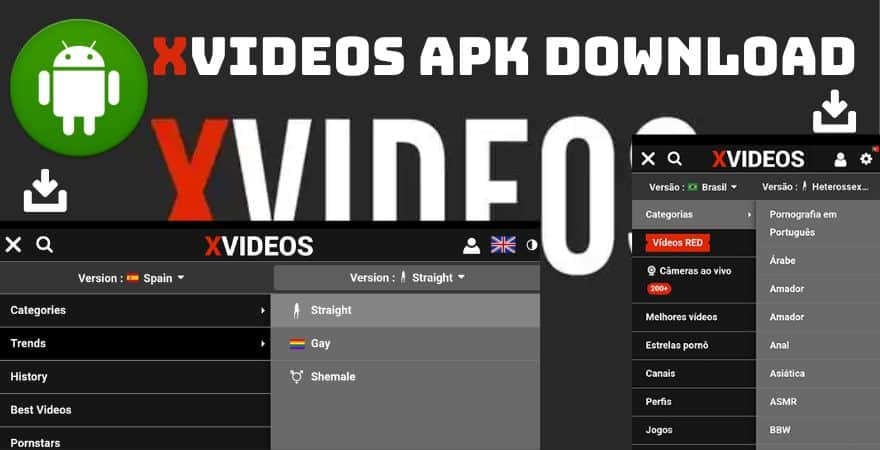“Okay, here is an article about APK downloads in English, aiming for approximately 1600 words.
Okay, here is an article about APK downloads in English, aiming for approximately 1600 words.

The World of APK Downloads: A Comprehensive Guide Beyond the Play Store
In the vast and vibrant ecosystem of Android, apps are the lifeblood that powers our smartphones, tablets, and other devices. For the vast majority of users, discovering and installing these applications is a simple, straightforward process: open the Google Play Store, search for the desired app, tap "Install," and let the magic happen. It’s convenient, secure (relatively), and the default experience for millions.
However, beneath this polished surface lies the fundamental package format that makes it all possible: the APK. And while the Play Store is the primary gateway, it’s not the only way to get an app onto an Android device. Downloading and installing APK files directly from sources outside the official store is a practice that is both powerful and popular, yet one that comes with its own set of unique advantages and significant risks.
This article delves deep into the world of APK downloads. We’ll explore what an APK is, why someone might choose to venture outside the safe confines of the Play Store, how to perform these installations, and most importantly, the critical security implications and best practices to protect yourself in this less-governed territory.
What Exactly is an APK?
Let’s start with the basics. APK stands for Android Package Kit. Think of it as the packaging format used by the Android operating system for distribution and installation of mobile applications. It’s essentially a compressed file, similar to a .zip or .rar archive, that contains all the necessary components for an Android app to function.
Inside an APK file, you’ll find:
- Compiled Code: The core programming instructions that make the app run (usually in Dalvik executable format,
.dexfiles). - Resources: Assets like images, audio files, fonts, and other media used by the app.
- Manifest File: An
AndroidManifest.xmlfile that describes the app’s structure, components (activities, services, etc.), required permissions (like access to contacts, camera, internet), hardware features it needs, and other metadata essential for the Android system to understand and run the app. - Certificates and Signature Files: Cryptographic files that verify the authenticity of the app and its developer. This signature is crucial; any modification to the APK after it’s signed will invalidate the signature, which the Android system can detect.

When you download an app from the Google Play Store, the Play Store app itself downloads the APK file in the background and then handles the installation process for you. When you download an APK directly from a website or another source, you are essentially performing the first step (downloading the package) manually, and then you need to trigger the installation yourself.

Understanding that an APK is the raw, installable file is key to understanding the process and the potential risks involved when obtaining it from non-official channels.
Why Download APKs Outside the Google Play Store?
Given the convenience and perceived safety of the Google Play Store, why would anyone bother downloading an APK file directly? There are several compelling reasons that drive users to this practice:
- Access to Geo-Restricted Apps: Some applications are only available in specific countries or regions due to licensing agreements, regional preferences, or phased rollouts. By obtaining the APK directly, users in unsupported regions can often install and use these apps, bypassing geographical restrictions.
- Getting Apps Not Available on the Play Store: Not every Android app makes it to the Google Play Store. This could be because:
- The app violates Play Store policies (e.g., certain utility apps, apps that modify system behavior extensively).
- It’s a beta version not yet released publicly.
- It’s a niche app distributed directly by a developer.
- The app was removed from the store (temporarily or permanently) but is still functional.
- It’s an alternative app store client itself.
- Installing Older Versions of Apps: App updates, while usually beneficial, can sometimes introduce unwanted changes, remove features, or cause compatibility issues with older devices or specific Android versions. Downloading an older APK allows users to revert to a previous, preferred version of an app.
- Early Access to Updates: Sometimes, app updates are rolled out gradually on the Play Store. APK files for the new version might become available on third-party sites hours or even days before they reach your device through the official channel, allowing eager users to get the latest features sooner.
- Installing on Devices Without Google Services: Some Android devices, notably certain models from Huawei released after a specific period, do not come with Google Mobile Services (GMS) pre-installed, which includes the Google Play Store. Downloading APKs from alternative sources is often the primary way to get apps onto these devices.
- Backup and Restore: Users might download APKs to create backups of their installed applications, which can be useful for restoring apps after a factory reset or on a new device without needing to redownload everything from the store.
- Developer and Testing Purposes: Developers often share APKs directly with testers for beta programs or internal testing before a public release.
- Circumventing Device Compatibility Issues (Sometimes): Occasionally, the Play Store might report an app as incompatible with your device, even if it might technically run. Downloading the APK can sometimes bypass this check, though success is not guaranteed and may lead to instability.

These reasons highlight the flexibility and control that direct APK downloads offer. However, this power comes with significant responsibility and requires a cautious approach.
How to Download and Install an APK
The process of downloading and installing an APK file is relatively simple, but it involves a crucial security step that is often the point of vulnerability. Here’s a general guide:
Step 1: Find a Source for the APK File
This is arguably the most critical step from a security perspective. You need to locate a website or source that hosts the APK file for the app you want. This could be:
- The official website of the app developer (less common for mainstream apps, but possible for smaller utilities or beta programs).
- Reputable third-party APK hosting websites (we’ll discuss these and their risks later).
- A file shared directly by someone you trust (like a developer or tester).
Step 2: Enable Installation from "Unknown Sources"
By default, Android devices are configured to block installations from sources other than the Google Play Store. This is a core security feature designed to protect users from accidentally installing malicious software. To install an APK you’ve downloaded, you must temporarily override this setting.
The exact location and name of this setting have changed over different Android versions:
- Older Android Versions (e.g., Android 7 and below): There was usually a single system-wide toggle in
Settings > Securitycalled "Unknown Sources." You would check this box to allow installations from any source outside the Play Store. Crucially, it was recommended to uncheck this box immediately after installing the APK. - Newer Android Versions (e.g., Android 8 and above): Google improved this security model. Instead of a single system-wide toggle, the permission to install from unknown sources is now granted on a per-app basis. This means you allow a specific app (like your web browser or file manager) to install APKs, rather than allowing any downloaded file to be installed.
- You’ll typically find this setting under
Settings > Apps & notifications > Special app access > Install unknown apps. - From there, you select the app you used to download or open the APK (e.g., Chrome, Firefox, Files by Google) and toggle the "Allow from this source" permission.
- You’ll typically find this setting under
This per-app permission model is significantly more secure as it limits the potential attack surface. You only grant the permission to the specific app you are actively using for the installation.
Step 3: Download the APK File
Navigate to the source you found in Step 1 using your device’s web browser. Find the download link for the APK file and tap it. Your browser will likely warn you that downloading this type of file can be harmful. This is the system reminding you of the inherent risk. If you trust your source, proceed with the download.
The file will be saved to your device’s download folder (or a location you’ve specified).
Step 4: Locate and Run the APK File
Once the download is complete, you need to open the APK file to start the installation. You
